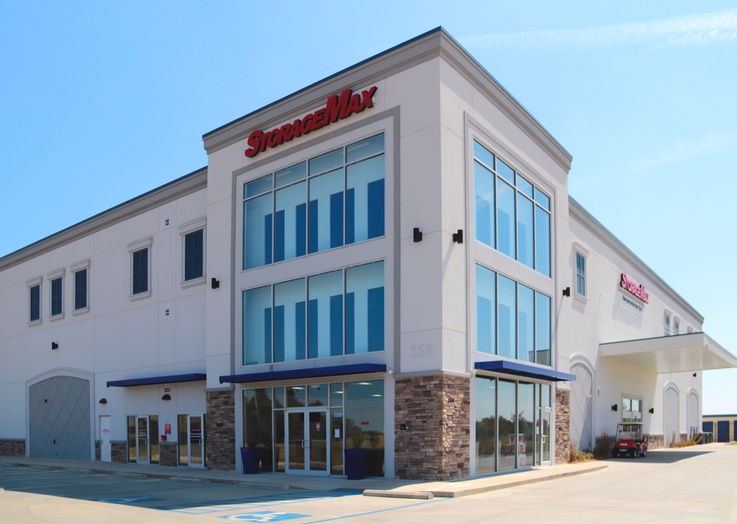Operating At High Occupancy Levels
Why You Should Keep The Pedal To The Metal
As occupancy levels across the self-storage industry continue to traverse all-time highs, there has been an increasing chorus of questions about whether marketing spend levels should be pared down because we, as operators, are “already full”. It makes sense, right? If we are out of bread on the shelf, why would we keep burning through marketing dollars to advertise our selection of bread? The reality is this doesn’t make any sense at all for self-storage.
Don’t Run Out of Bread
The first problem with the bread analogy is that the grocer shouldn’t have been out of bread to begin with. Self-storage operators often obsessively focus on occupancy as though it is the be-all and end-all for our business. However, we don’t pay our bills, teammates, or investors in occupancy; we pay them in dollars. So, it is important that we first accept that we are all trying to maximize revenue, and our work is not done when we are full. If we find ourselves out of space, we’ve probably actually made some missteps.
To price our precious storage space in this capacity constrained business correctly, we should always have a selection of available units to accommodate new business. This doesn’t mean we are leaving anything on the table by failing to rent our last units (or, as we call them, “cubes”), it just means that we need to have sufficiently raised rents on new and existing tenants to maximize the efficiency of the limited space that we have so that we are getting the most possible revenue per available square foot.
This is more difficult to manage in the bread analogy since it is a higher volume business, and it is difficult for a grocer to set the price so that there is precisely one loaf of each type left on the shelf. What’s more, the buyers of the bread don’t return the bread to replenish consumed inventory with the kind of consistent move-out cadence we see in self-storage. In retailing, supply chain disruptions can cause very lumpy inventory disruptions. In contrast, with an average of just one rental per day per store, or 0.04 rentals per unit type per day per store, and fairly consistent move-out patterns, we simply don’t (or shouldn’t) experience those kinds of supply surprises.
Demand Is Fungible: Marketing Dollars Aren’t For Naught
The key here is to understand that demand is fungible. I am not referring to the fact that a customer may accept a different type of unit if the apple of her eye is fully occupied. While true, to a degree, it is far more important to consider that demand–and, specifically, self-storage demand–can manifest itself in a couple of different ways, namely in the form of either occupancy or effective rate (the combination of asking rates, concessions, and discounts).
All else equal, higher effective rates will result in less demand. That is your pricing lever. I don’t want to oversimplify the massively complex scientific demand forecasting and pricing optimization models that go into determining how far to push or pull this lever to manage our fixed capacity efficiently (that will be the subject of another article); I just want to focus on the fact that for any price action, there is an opposite (but not necessarily equal) demand reaction.
So, now consider what happens when demand increases or decreases due to either our own efforts or exogenous factors (like weather or the economy). We can’t control all shifts in demand, but marketing is, essentially, your demand lever. If we increase demand beyond what we can accommodate due to our limited availability, it doesn’t mean that we simply miss out on the opportunity. Nay, this shift in demand gives us meaningful pricing power. We may not be able to rent enough extra units to satisfy all of those incremental customers, but we can adjust our prices for both new and existing customers such that we are maximizing the economic output of our limited space. Essentially, we can capitalize on that newly created demand in the form of rate, if not occupancy.
The point here is that we don’t have to turn off the spigot when we are highly occupied, as long as we are dynamically pricing our space from the perspective of revenue maximization. This is the first key point to consider when contemplating the mistake of dramatically reducing your marketing budget.
Little’s Law: A Little Formula With Big Marketing Implications
The other point to consider when deciding how much throttle to apply to your marketing budget is that, all else equal, you must rent space at a higher velocity to maintain higher occupancy levels. This is not immediately intuitive for most people, but there is a nifty formula from operations management that we can cleverly apply to the self-storage business.

Basically, Little’s Law is a formula that allows supply chain and production managers to determine the number of items in queue associated with certain inflow rates and processing (or wait) times. But, by changing the names of some of the variables in this equation, we see that it applies beautifully to self-storage.
So, for self-storage, Little’s Law shows us very clearly that our normalized occupancy level is a direct function of our move-in rate and our length of stay. The main implication for our discussion here is that, with some algebra, we can rearrange the formula to show that, as long as our average length of stay remains constant, we must have higher move-in velocity in order to sustainhigher occupancy levels (the other implication with this formula, which we won’t get into here, is that managing length of stay through customer targeting can have a dramatic impact on occupancy and required rental velocity). To illustrate our primary argument, if an operator is renting seven percent of her space per month and has an average length of stay of 13 months per customer, she will eventually normalize at 91 percent occupancy. Conversely, if an operator is operating at 95 percent occupancy and wants to maintain that normalized level, she must now rent 7.3 percent of her space every month.
The bottom line here is that you shouldn’t be dramatically decelerating your marketing expenditures when occupancy levels are higher. Instead, you probably need to put the pedal to the metal.
Daniel Ruble is vice president of marketing at CubeSmart.
More Content
Popular Posts
Recent Posts
When Germantown High School in Gluckstadt,...
It’s comforting to know that no matter how...
A very wise self-storage expert once said...
Senate Bill 709 (SB709) has many in the...
In January, self-storage industry veteran...
In April 1984, the first non-stop commercial...
Raise your hand if you’ve ever made plans,...
Everyone knows it: Investing in real estate...









